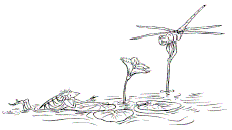The 20th century was an era when human beings tried to control nature and society by force and caused inordinate destruction and pollution, not to mention engaging in numerous wars and disputes. In the Asaza Project, the retrieval of the natural environment of the lake and the transformation of society are not being carried out by force. This approach will provide our society with a profound, beneficent transformation. The strategy being adopted will add an environmental conservation instinct to existing society, rooted in communities, to produce approaches expanding itself onto the surroundings, and also promote a qualitative transformation in society by creating awareness in each organization of their connection with the whole of society. From the viewpoint of environment conservation, other values will be found in the existing system and rooted in society through a new relationship (network) based on conservation of the environment. These changes, under the concept of the local ecology conservation, will restructure the society.
Accordingly, the coexistence with nature requires two mutually interactive strategies: theorization of conservation ecology to define the mechanisms (the elements and their relations) that support the local “integrity of biodiversity” and “maintaining a sound ecosystem”; and restructuring of the social system whereby such mechanisms are implemented in society through tuning with real-life social elements. We believe that it affords a creative and effective approach.
When it comes to nature preservation and conservation of the environment, it is difficult to encourage people to take the initiative if they are merely harassed with regulations and restrictions. Therefore, although nature conservation and environmental preservation are essentially creative processes, they will not be embraced by contemporary society, which is based on individualism (i.e., personal senses of values) unless they produce new interesting and credible cultures, societies, technologies, values, and even “new lifestyles”. The Asaza Project has been proposed as one type of creative approach with this as its aim.
More significantly, a revival scenario set 100 years from now will be needed to avoid a catastrophic scenario in 100 years. We do not need a goal of “escaping destruction” but a goal of “reviving” to motivate people to act on their own initiative.
For this purpose, the process of environmental revival and construction of a sustainable society should be presented using specific pictures (e.g., the comeback of wildlife). Of course, this is not just a dream or wish: it must be supported scientifically and politically.
The Asaza Project is a long-term 100-year plan with the set goal of the return of specific species of wildlife every decade (front page). Each wildlife species represents a particular environmental element to be revived in the lake and basin with the measures needed for that purpose. The goals are as follows: great reed warblers in 10 years, cuckoos and whooper swans in 20 years, bean geese in 30 years, white storks in 40 years, cranes in 50 years, and Japanese crested ibises in 100 years. It is a plan to reverse the extinction of ibises that has taken place in Japan’s last 100 years of modernization. We want to represent, in the form of an image of countryside graced by flying ibises, what people tried to protect and to regain through their struggles against the Ashio Mine Pollution tragedy a century years ago and subsequent pollution problems such as Minamata disease.










